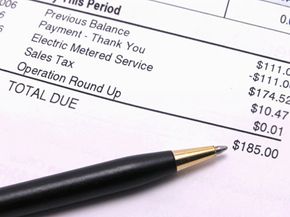Footprints offer clues about where we came from and where we're headed. Their impressions tell us something about the animals that leave them. But while actual footprints offer details on size, weight and speed, a carbon footprint measures other information. But what is a carbon footprint?
This measurement tells us how much carbon dioxide (CO2) we produce just by going about our daily lives. A drive to work, a flip of a light switch and a flight out of town all rely on the combustion of fossil fuels like oil, coal and gas. When fossil fuels burn, they emit greenhouse gases like CO2 that contribute to global warming. Ninety-eight percent of atmospheric CO2 comes from the combustion of fossil fuels [source: Energy Information Administration].
Advertisement
People concerned with the environment, climate change and global warming usually try to reduce their greenhouse gas emissions by increasing their home's energy efficiency and driving less. Some start by calculating their carbon footprint to set a benchmark — like a weigh-in before a diet.
A carbon footprint is simply a figure — usually a monthly or annual total of CO2 output measured in tons. Websites with carbon calculators turn easy-to-supply information like annual mileage and monthly power usage into a measurable tonnage of carbon. Most people try to reduce their carbon footprint, but others aim to erase it completely.
When people attempt carbon neutrality, they cut their emissions as much as possible and offset the rest. Carbon offsets let you pay to reduce the global greenhouse gas total instead of making radical reductions of your own. When you buy an offset, you fund projects that reduce emissions by restoring forests, updating power plants and factories or increasing the energy efficiency of buildings and transportation.
Some companies have started to include footprints on their labeling. Carbon labels appeal to consumers who understand and monitor their own carbon footprints and want to support products that do the same. The labels estimate the carbon dioxide emissions created by producing, packaging, transporting and disposing of a product.
The concept is similar to life cycle assessment, the more intricate forerunner of carbon footprints. Life cycle analyses or assessments evaluate all of the potential environmental impacts that a product can have during its existence, including direct and indirect emissions — they're a more focused version of a carbon footprint.
But life cycle analyses require teams of researchers who plot and compile data from every aspect of production, transportation and disposal. Personal carbon footprints are less precise but still give a quick, general idea of CO2 output. Best of all, they take about five minutes to calculate.
In this article, we'll learn how carbon calculators come up with your personal total, what it means and how to reduce your carbon footprint.
Advertisement



